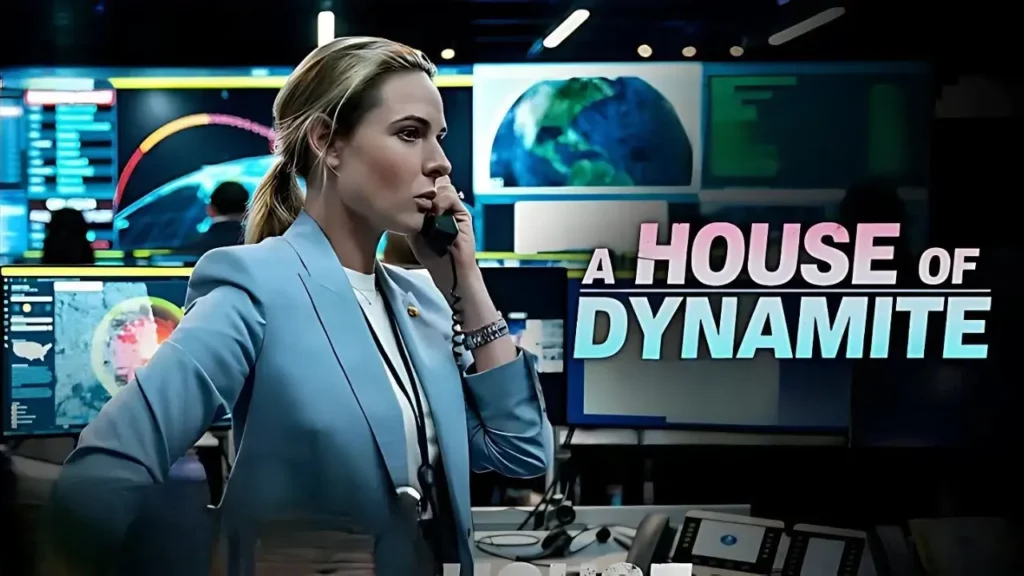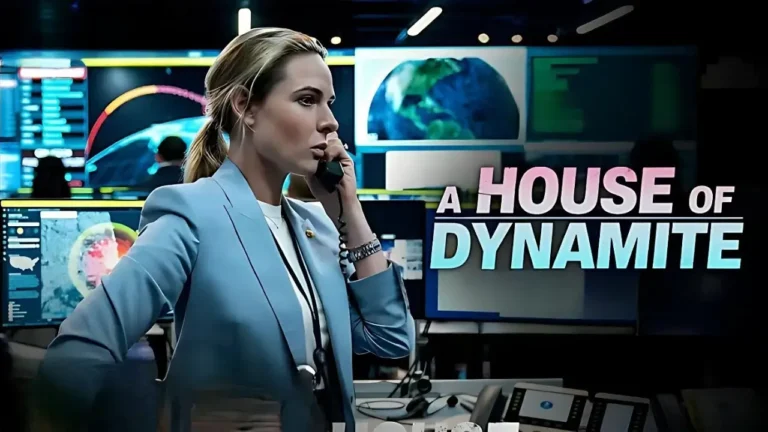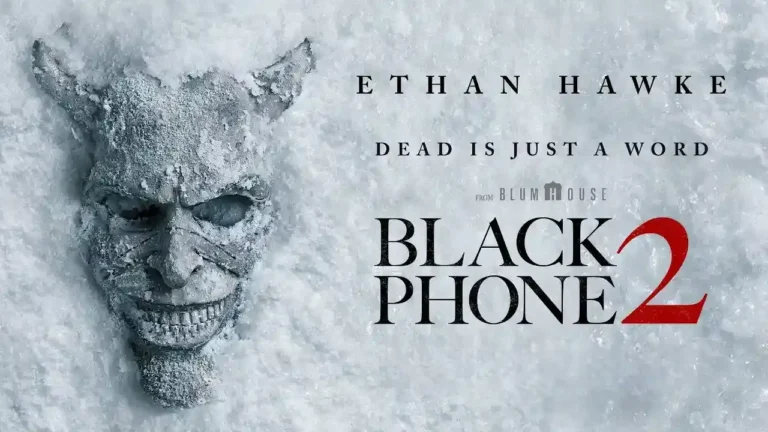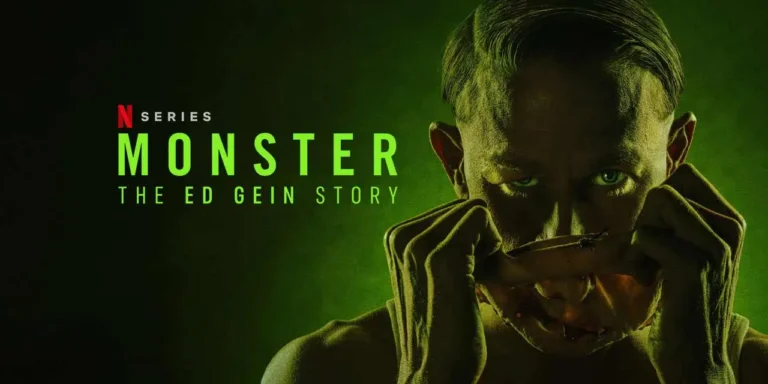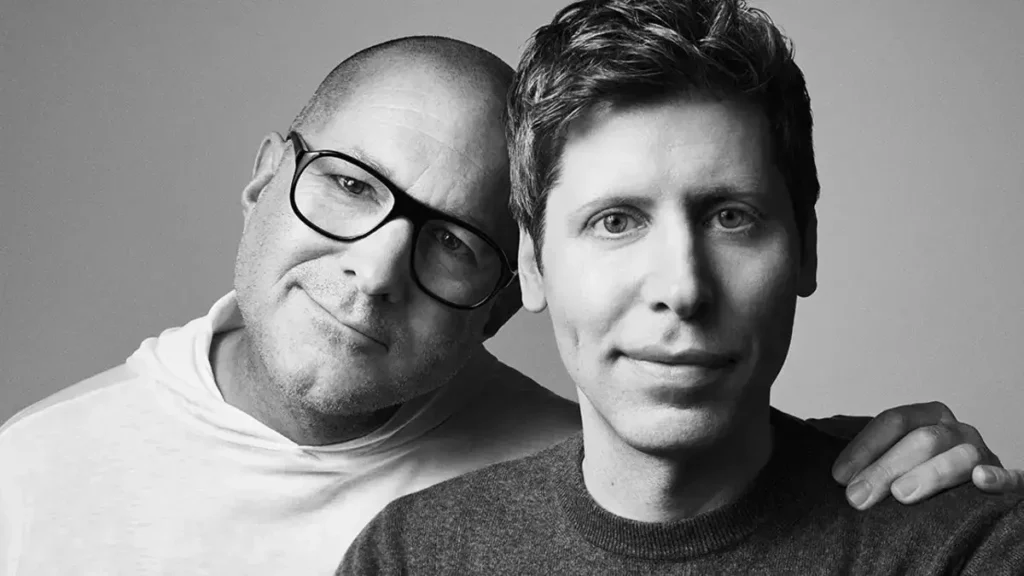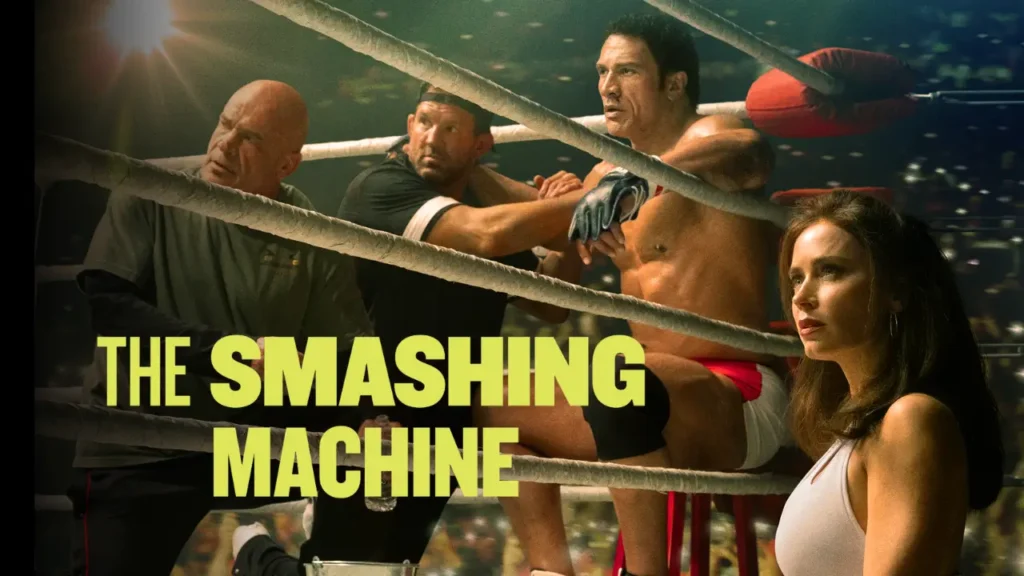House of Dynamite Review: When I walked out of House of Dynamite, my first thought was, This is the kind of film that reminds you why theaters exist. It’s tense, it’s urgent, and it’s terrifyingly plausible. Katherine Bigelow hasn’t made a movie in a while, but damn, she’s still unmatched when it comes to capturing chaos with surgical precision.
This isn’t your typical “eat your vegetables” political thriller that lectures you for two hours. House of Dynamite hits like a gut punch, loud, precise, and scarily real.
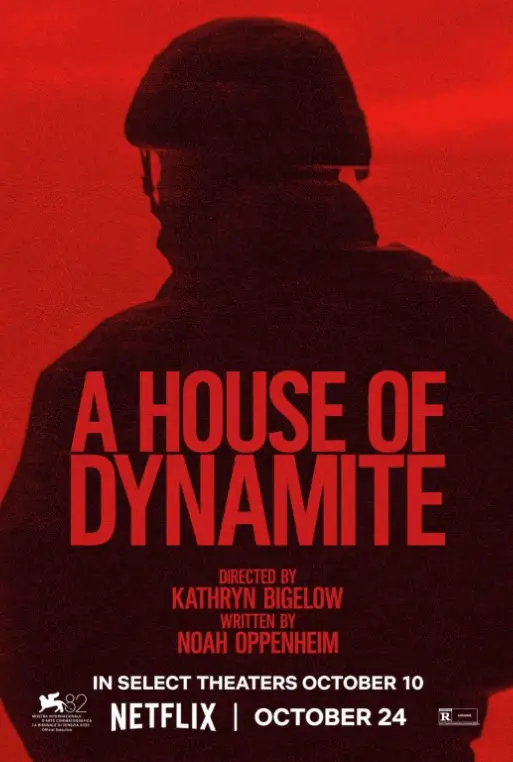
My Rating:3.5/5
| Category | Details |
|---|---|
| Title | House of Dynamite |
| Director | Katherine Bigelow |
| Writer | Noah Oppenheim |
| Genre | Political Thriller, Nuclear Thriller, Drama |
| Main Cast | Idris Elba, Rebecca Ferguson, Gabriel Basso |
| Runtime | 1h 52m |
| Country | United States |
| Language | English |
| Distributor / Platform | Theatrical release + Netflix (from Oct 24) |
| Release Date | Netflix (Global): October 24, 2025 |
Table of Contents
ToggleA Nuclear Thriller That Hits Too Close to Home
Let’s start with this: House of Dynamite doesn’t waste time. The entire movie unfolds over just a few hours. Somewhere in Alaska, radar picks up what looks like a nuclear strike. Meanwhile, in Washington D.C., Rebecca Ferguson’s character, poised, calculating, but clearly shaken, leads a desperate attempt to figure out what the hell is happening.
You can feel the tension humming in every frame. Phones ring, screens flash, generals argue over data they don’t trust. Every second feels like borrowed time. And the most frightening part? None of it feels far-fetched. It’s the kind of scenario that makes you glance at the sky when you leave the theater.
Katherine Bigelow Is Still in a League of Her Own
Bigelow’s direction is electric, steady hands in total chaos. She’s always excelled at showing what pressure does to people (The Hurt Locker, Zero Dark Thirty), but here, she’s working at an almost surgical level of precision.
The pacing is brutal. There’s no downtime, no exposition dumps. Just controlled panic, bouncing between locations like a heartbeat skipping out of rhythm. It’s classic Bigelow, technical, tense, and emotionally loaded.
The Real-Time Structure Feels Like a Countdown
The film’s Rashomon-like approach, where we see the same events from multiple perspectives, works beautifully. The first time through, you’re confused and anxious. The second time, everything starts clicking. Characters you barely noticed before suddenly matter. Lines of dialogue gain new meaning.
It’s a structure that rewards attention. Think Before the Devil Knows You’re Dead meets United 93, but bigger in scope and colder in tone.
Rebecca Ferguson Owns the Situation Room
Rebecca Ferguson carries this movie like she was born to play this role. Her character, let’s just call her “the calm in the storm,” anchors the chaos with quiet authority. She doesn’t overplay it. Every flicker of doubt, every micro-expression feels earned.
Through her, we see the psychological toll of decision-making under impossible pressure. She’s not just trying to save her country, she’s trying to make the right call when every option is wrong.
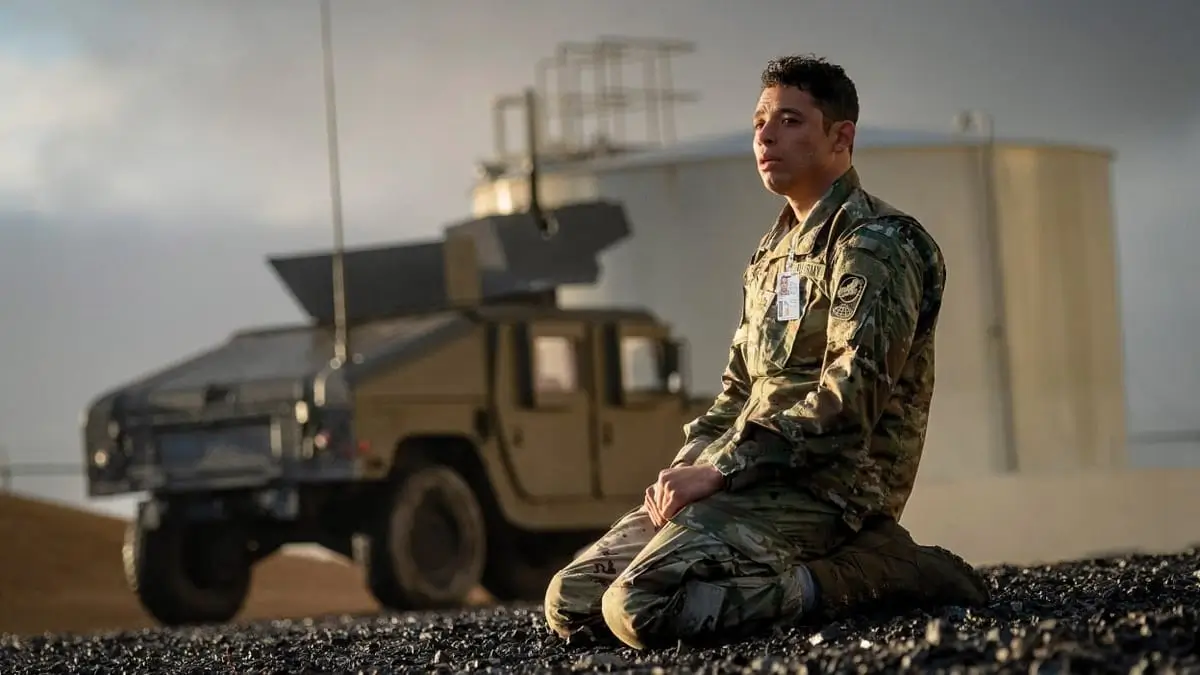
Anthony Ramos Brings Humanity to the Cold
Over in Alaska, Anthony Ramos represents the human side of the machine, the people following orders but still feeling every consequence. His scenes are among the most nerve-racking, filled with quick, clipped communication and icy air that feels tangible.
It’s Bigelow’s gift to make us care about both the generals and the ground crew. Every person matters, even if their fate is sealed in minutes.
The Ensemble Is Stacked and Stunning
Tracy Letts delivers a monologue that stops the film cold. It’s raw, moral, and furious, a performance that could win awards on its own. Jared Harris (as the Secretary of Defense) is commanding, while Gabriel Basso’s layered turn as the deputy national security adviser reveals deeper complexities on repeat viewings.
Even the smaller appearances—from Renee Elise Goldsberry to Jonah Hauer-King- make the film feel massive. Like a 1970s disaster epic, but sharper and far more grounded.
A Masterclass in Editing and Cinematography
Kirk Baxter’s editing is relentless. He keeps you locked into that state of anxious adrenaline where every second counts.
Barry Ackroyd’s cinematography, the same guy who shot The Hurt Locker, brings that grainy, real-world texture. The visuals jump between claustrophobic rooms and massive world maps, pulling you into both the micro and the macro chaos.
And then there’s the score. Low, throbbing, and physically felt, it’s not background music; it’s a pulse.
Themes That Cut Deep
Underneath all the protocols and panic lies one big question: what happens when the systems we trust fail? It’s not just about nukes. It’s about trust, trust in data, in people, in leadership. The movie keeps forcing you to ask: “Would I trust that call?”
And that’s where House of Dynamite terrifies the most. It’s not the explosions, it’s the silence before the decision.
The Forgotten Fear of the Nuclear Age
We’ve become numb to nuclear fear. Once upon a time, we had The Day After on TV, and everyone talked about deterrence and fallout shelters. Now it’s background noise.
Bigelow drags that fear back into the light, and it’s unsettling how relevant it feels. We may think we’ve moved past that Cold War dread, but House of Dynamite proves we’re still just one bad decision away from catastrophe.
Noah Oppenheim’s Script: Tight, Smart, and Human
Noah Oppenheim (known for Jackie) writes with surgical focus. He doesn’t drown you in jargon. Every line has weight.
The dialogue feels authentic, with short, tense exchanges that say everything without overexplaining. And yet, we still get glimpses of the people behind the uniforms. That’s what gives the movie its heart.
Echoes of Past Masterpieces
If you’ve seen Fail Safe or Dr. Strangelove, you’ll recognize the DNA here, but House of Dynamite stands on its own. It’s more grounded than satire and more personal than spectacle.
It’s a nuclear nightmare told through modern lenses: digital systems, political posturing, and human vulnerability.
Also Read: Vicious Review: Dakota Fanning’s Most Terrifying Role Yet
Emotional Impact
By the end, I wasn’t just tense, I was exhausted. In a good way. The movie leaves you shaken but grateful. Grateful that people like these characters (hopefully) exist in the real world. It’s the rare film that makes you think and feel at the same time.
Verdict: Bigelow’s Best Since “Zero Dark Thirty”
House of Dynamite might just be Bigelow’s best work since Zero Dark Thirty. It’s timely, technically perfect, and emotionally gripping. If you can, see it in theaters. The sound alone deserves a big screen.
- My Rating: 9.4/10
Easily one of the year’s best and most important films.

Good & Bad
| What Worked (Good) | What Didn’t (Bad) |
|---|---|
| Rebecca Ferguson’s commanding performance | Slightly confusing timeline on first watch |
| Razor-sharp direction from Bigelow | Too many British actors playing Americans |
| Realistic dialogue and tension | Heavy atmosphere may not suit casual viewers |
| Outstanding editing and score | Limited character backstories |
| Deep moral and political questions | Minimal humor or relief |
Conclusion
House of Dynamite is more than a thriller; it’s a mirror held up to a fragile world order. It’s not fun popcorn cinema, but it’s vital. Bigelow doesn’t just make you watch the end of the world; she makes you feel the weight of trying to stop it.
I walked out shaken, impressed, and hopeful. Hopeful that smart people like these characters still exist. Hopeful that Bigelow keeps making movies like this. If you care about film, storytelling, or just being reminded how fragile our world really is, go see this.
FAQs
Q1. Is “House of Dynamite” based on a true story?
No, but it’s rooted in real-world nuclear protocol and geopolitical realities, which makes it feel disturbingly authentic.
Q2. Where can I watch it?
It’s currently in theaters and will be available on Netflix starting October 24.
Q3. How long is the movie?
Roughly two hours, but it flies by thanks to the nonstop tension.
Q4. What makes Katherine Bigelow’s direction unique here?
Her ability to blend realism, urgency, and character depth makes chaos look controlled but deeply human.
Q5. Is it worth watching in a theater?
Absolutely. The sound design and scale demand it. You’ll feel every second of tension.
